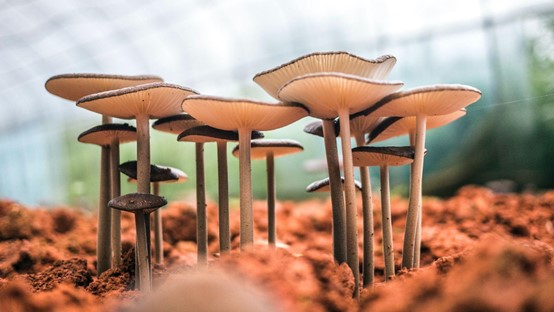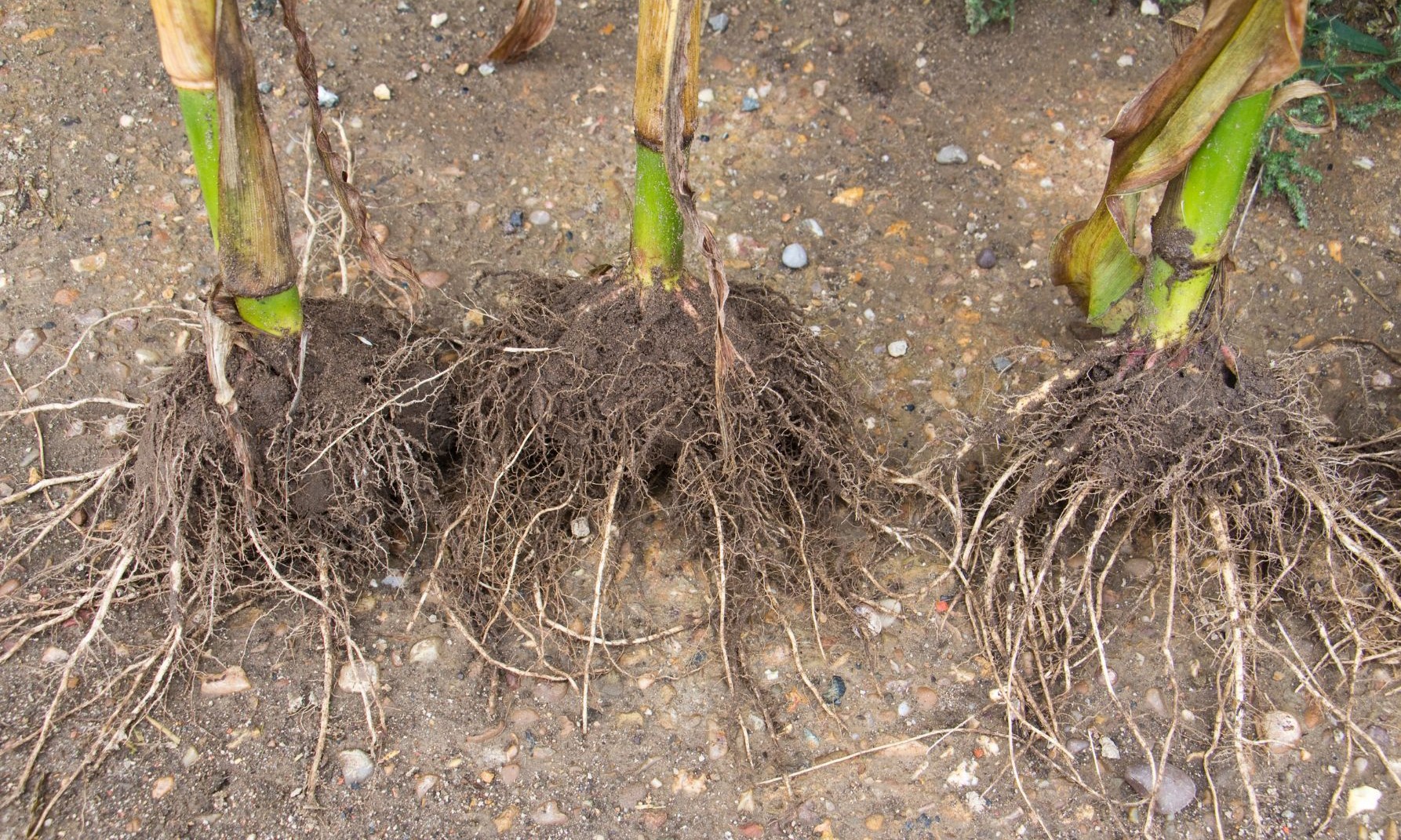The Importance of Mycorrhizae in Agriculture and Ecosystems
What is mycorrhizae?
With the term “Mycorrhizae” someone can refer to both the type of symbiotic fangi or the symbiotic relationship between fungi and plant roots.
The etymological origin of the word is highly indicative of its meaning. ‘mycorrhiza’ is derived from the Greek words (Myco = fungus) and (Rhiza = root) and ‘describes many different links between the root of a plant and the fungus. Primarily, it refers to the symbiotic relationship between them. Mycorrhizae can take a variety of shapes depending on the taxonomy of the host plant and fungus. Their primary function is to increase the host plant’s intake of nutrients and water by utilizing more soil than roots alone can. The dispersion of their hosts’ plants and climatic and soil factors influence these forms’ distribution in ecosystems. The performance of the host plant can be changed by mycorrhizae’s capacity to enhance host plant nutrition and water uptake, as well as support defense against root infections and grazing.
Mycorrhizal fungi are ancient organisms. There is proof that they have existed for more than 460 million years. They maintained their physical characteristics throughout that time (Parniske, 2008).
Why is mycorrhizae essential for the plants and the ecosystem?
Mycorrhizae can affect the composition of the plant community, increase competition, and foster synergism by allowing various species to share resources. These effects can be achieved by variably influencing the performance of individual species within the community. Both invertebrate and vertebrate species rely on mycorrhizal fungus and their fruiting structures as significant food sources. In forestry, agriculture, and restoration, mycorrhizae are utilized to increase yield and reduce some pollutants from growing on disturbed land. Mycorrhizal fungi are potential candidates for restoring and cleaning up damaged habitats because of their capacity to gather radioactive materials and heavy metals. The relative abundance of mycorrhizal fungi to saprotrophs has changed in the last few years due to pollution, climate change, and habitat loss, necessitating increased efforts in fungus conservation.

Mycorrhizae are found in ‘most families of soil plants’ and, more specifically, ‘in the roots of about 80-90 % of plant species (mainly agro forbs, many cultivated plants except the Brassicaceae and herbs’.
Plant roots are hospitable sites for the fungi to anchor and produce their threads (hyphae). As a result, the existence of mycorrhizal fungi is, therefore, directly intertwined with the very existence and function of most ecosystems and, consequently, with existence itself in general.
How can we categorize mycorrhizae?
Mycorrhizae can be divided into ectomycorrhizae and endomycorrhizae.
Sheathing mycorrhizae is another name for ectomycorrhizae. The fungus only penetrates the cortex’s cell wall, covering the tips of immature roots; no other cellular penetration occurs. Numerous evergreen trees and shrubs have them. Among the deciduous trees are colonized trees belonging to the genera Fagus, Betula, Quercus, Tilia, Populus, Salix, and Castanea.
The ectomycorrhizal fungus is a member of the Basidiomycetes subclass of fungi. Fungi, known as basidiomycetes, frequently create mushrooms as their fruiting structures. This explains why mushrooms grow in the area around a tree’s roots that is below its drip line. In addition to absorbing phosphate from the soil, ectomycorrhizae are crucial for absorbing ammonium and zinc. The fungi that coexist with the plant in a symbiotic relationship are largely host-specific. Some fungal species, nevertheless, may be more adaptable and will colonize a variety of plant types. Ectomycorrhizal fungi can spread by transferring infected plant tissue or by airborne spores.
On the other hand, endomycorrhiza penetrates the plant’s roots and grows fully there. The form of endomycorrhiza most frequently seen on deciduous trees, annual agronomic crops, and other herbaceous plants is the vesicular-arbuscular endomycorrhiza (V-A type). The mycelium of the endomycorrhiza penetrates the cortical cells of the root, in contrast to the ectomycorrhiza.
The main types of mycorrhizal species
Endomycorrhizal fungi – Part of the fungal hyphae is inside the plant cell.
- Arbuscular Mycorrhizae (AM fungi) are the most common type formed only by fungi in the division Glomeromycota.
- Orchid Mycorrhizae and hyphal lamellae are formed within the root cells of orchid plants.
- Ericoid Mycorrhizae grows on plants of the order Ericales. The fungal hyphae are attached to the root hairs of the plant.
- Monotropoid mycorrhiza: Besides numerous taxa in the Orchidaceae, this kind of mycorrhiza is seen in the Ericaceae subfamily Monotropoideae.
Ectomycorrhizal fungi – a network consisting of a Hartig net of hyphae encircling the plant cells in the root cortex and a hyphal sheath, or mantle, covering the root tip.
- Basidiomycetes are mainly involved, but other fungal species are also involved.
- Arboreal: In this type, tissues (dendromorphs) form between the root cells’ cell walls and membranes.
- Orchid: Other subclasses such as arbutoid, monotropoid, etc.
Arbuscular mycorrhizal fungi (AM fungi) form symbiotic relationships with 70-90% of all plants (Maillet et al., 2011).

The order Glomerales and the monophyletic phylum Glomeromycota both contain all arbuscular mycorrhizae. The usefulness of arboreal mycorrhizal fungi is manifold.
What does mycorrhizae do for plants? – How are plants benefit from mycorrhizae?
The first benefit concerns the uptake of valuable minerals from the soil, such as N, P, K, Ca, S, Fe, Mn, Cu, Zn, and their transport to the roots of the plants they symbiote.
For example, phosphorus, which is highly important for plant growth, especially in the early stages of plant growth, impacts the biomass developed by the plant.
Studies have shown that a tree mycorrhizal fungus can supply the plant with which it symbioses with large amounts of phosphorus, up to 80% of its needs, as well as meeting its nitrogen needs up to 25%. For some elements, such as P, this property is fundamental as this element, like copper and zinc, may be present in the soil but in a form that cannot be absorbed by the plant and is, therefore, unavailable and an obstacle to the plant’s growth. Thus, even if an element is available in the soil, it is best utilized by a symbiotic plant with such a fungus. Also, the availability of phosphorus in an ecosystem can inhibit the uptake of other nutrients since competition can develop. This shows us that adding enormous amounts of phosphorus fertilizer and the economic cost can have the opposite effect. This is of great importance in addressing ecological problems that develop due to the misuse of fertilizers by farmers, fertilizers that require energy consumption to produce deplete natural resources and end up in aquatic ecosystems, thus causing the phenomenon of eutrophication.
The main advantage of fungal hyphae in absorbing inorganic chemicals from the soil is their smaller diameter than the root hairs, increasing the surface area of interaction between the fungus and the soil. Thus, the symbiotic relationship between plants and fungi becomes obvious. The latter are found in abundance in plants growing in soils poor soils.
Which plant-crops benefit from mycorrhizal fungi?
There numerous plant species, among them many crop plants, that can have and benefit from a symbiotic relationship with endomycorrhizae fungi. Among them, we find: Corn, Cotton, Mango, Raspberry, Alfalfa, Rice, Wheat, Cow Pea, Almond, Pistachio, Apple, Citrus, Peach, Cherry, Olive, Apricot, Pear, Cucumber, Ryegrass, Maples, Artichoke, Melons, Squash, Watermelon, Potatoes, Asparagus, Sorghum, Avocado, Eggplant, Millets, Bamboo, Soybean, Banana, Basil, Strawberry, Okra, Bean, Fig, Sugar Cane, Sunflower, Sweet Potato, Garlic, Papaya, Tea, Passion Fruit, Grapes, Tobacco, Tomato, Carrot, Cassava, Herbs, Celery, Coffee.
Which plants do not benefit from mycorrhizal fungi?
Principal crops are among the 29% of vascular plant species that do not support AM symbiosis. Thought to be non-host plants, however, can occasionally be colonized by AM fungus and exhibit rudimentary AM traits. Azalea, beet, blueberry, broccoli, Brussels sprouts, cabbage/kale, carnation, cauliflower, collards, cranberry, huckleberry, mustard, protea, rhododendron, sedge, and spinach are among the plants that do not respond to mycorrhizae.
Should I add mycorrhizal fungi to the soil?
Glomalin is a glycoprotein produced abundantly on hyphae and arbuscular mycorrhizal (AM) fungi spores in soil and roots. The mycorrhizal fungus can be very beneficial to plant health regarding soil structure. They can have tremendous effects despite being invisible, especially when not there. Soil particles create structure and a significant amount of hyphal network, which aids in holding those aggregates together. In addition, they contribute significantly to the soil’s organic content and aid in N, P, and other nutrient uptake. Plant-fixed carbon is converted into soil organic matter in return for soil nutrients. Consider whether the symbiotic relationship between these helpful fungi and your plants may be out of balance the next time you are perplexed by the results of a soil test that suggests appropriate fertility in a region that exhibits deficiencies signs.
However, it is essential to adjust the field management practices applied in order to protect this symbiotic relationship and the fungi growth. For example, tillage can destroy AM fungal–host relations and the mycelial network that has been created (Helander et al., 2018). Similarly, the use of agrochemicals like glyphosate can be detrimental to AM survival and host colonization.
References:
- Helena Devi, S., Bhupenchandra, I., Sinyorita, S., Chongtham, S. K., & Lamalakshmi Devi, E. (2021). Mycorrhizal Fungi and Sustainable Agriculture. IntechOpen. doi: 10.5772/intechopen.99262
- Helander, M.; Saloniemi, I.; Omacini, M.; Druille, M.; Salminen, J.P.; Saikkonen, K. Glyphosate decreases mycorrhizal colonization and affects plant-soil feedback. Sci. Total Environ. 2018, 642, 285–291
- Peterson RL, Piché Y, Plenchette C. Mycorrhizae and their potential use in the agricultural and forestry industries. Biotechnol Adv. 1984;2(1):101-20. doi: 10.1016/0734-9750(84)90243-x. https://doi.org/10.1016/B978-012373944-5.00327-8
- Liang, J., Zou, R., Huang, Y., Qin, H., Tang, J., Wei, X., Liang, Y., & Chai, S. (2022). Structure and diversity of mycorrhizal fungi communities of different parts of Bulbophyllum tianguii in three terrestrial environments. Frontiers in Plant Science, 13. https://doi.org/10.3389/fpls.2022.992184
- Liu, Z., Li, M., Liu, J., Wang, J., Lin, X., & Hu, J. (2022). Higher diversity and contribution of soil arbuscular mycorrhizal fungi at an optimal P-input level. Agriculture, Ecosystems & Environment, 337, 108053. https://doi.org/10.1016/j.agee.2022.108053
- https://extension.okstate.edu/fact-sheets/mycorrhizal-fungi.html
- Master thesis: “Η ΕΠΙΔΡΑΣΗ ΤΟΥ pH ΚΑΙ ΤΗΣ ΠΡΟΣΘΗΚΗΣ ΟΛΙΓΟΣΑΚΧΑΡΙΤΩΝ ΣΤΗΝ ΑΝΑΠΑΡΑΓΩΓΗ ΤΟΥ ΕΝΔΟΜΥΚΟΡΡΙΖΙΚΟΥ ΜΥΚΗΤΑ FUNNELIFORMIS MOSSEAE”, Eva Moscholidaki, Agricultural University of Athens, 2018.









































































